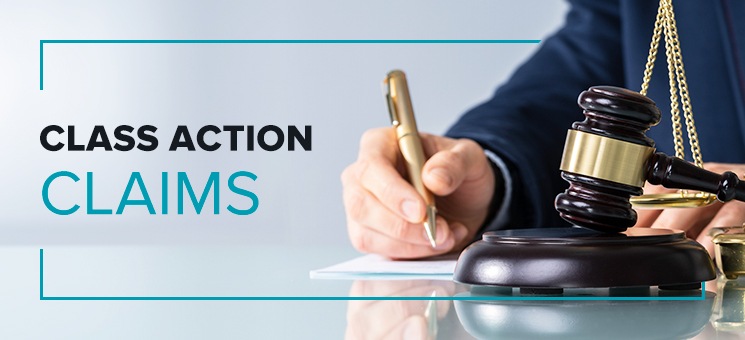Class Action Lawsuits 101: What You Need to Know About Legal Actions
Class Action Lawsuits 101: What You Need to Know About Legal Actions
Blog Article
Understanding Class Action Lawsuit: A Guide for Attorney
Class action suits have actually come to be an indispensable part of the lawful landscape, allowing for the consolidation of multiple cases into a solitary action. By delving into the details of class activity lawsuits, this guide outfits attorneys with the knowledge and tools required to successfully navigate this complicated area of legislation.
The Essentials of Course Action Claims
Class action lawsuits are a lawful mechanism employed to combine similar claims from a team of individuals right into a single claim, supplying a efficient and affordable technique to seeking justice and resolution. This sort of legal action allows a representative plaintiff, acting on behalf of the whole class, to bring a claim against an offender that has actually apparently triggered harm or broke the legal rights of numerous individuals.
The standard needs for bringing a course action lawsuit consist of numerosity, commonality, typicality, and adequacy of representation. Numerosity refers to the fact that the course need to be so huge that joinder of all members would certainly be unwise.
Course activity suits can be useful for both plaintiffs and offenders. For defendants, it uses the possibility to efficiently solve multiple cases in a single suit, staying clear of the demand to defend against countless individual suits.
Identifying and Assessing Possible Course Members
After developing the standard requirements for a class action claim, the following step is to determine and examine possible course participants. This procedure entails establishing who may become part of the class and assessing their insurance claims to establish if they fulfill the essential standards.
To recognize potential course participants, lawyers typically carry out extensive research and gather relevant details. This may include evaluating records, carrying out meetings, and taking a look at records to determine individuals or entities that might have been impacted by the claimed misdeed. It is critical to develop a thorough and clear checklist of possible course participants to make sure that all impacted parties are included in the legal action.
Once possible class members have been identified, the following step is to analyze their insurance claims. This involves evaluating the merits of each specific claim to establish if they satisfy the lawful demands for class accreditation. Legal representatives should carefully evaluate the truths, evidence, and legal theories of each prospective course member's insurance claim to ensure that they have a feasible instance.
Assessing potential course participants additionally entails determining whether they meet the course meaning and have experienced similar harm as a result of the defendant's activities. This requires comparing the realities and scenarios of each potential class participant's scenario to the claims and legal concepts placed forth in the lawsuit.
Navigating the Class Qualification Refine
To successfully navigate the class accreditation procedure, legal representatives should carefully abide by the procedural needs stated by the court. Class certification is a vital action in a class action lawsuit, as it identifies whether an instance can continue as a course activity, standing for a team of individuals who have similar insurance claims versus an offender. The procedure entails pleasing details criteria, such as numerosity, commonness, typicality, and competence of depiction.
First of all, lawyers should develop numerosity by showing that the class is so big that private joinder is not practical. This can be achieved with proof or expert testament. Second of all, they need to establish commonality by revealing that there are common concerns of regulation or fact that predominate over individual issues. This requires a comprehensive evaluation of the cases and defenses included.
Next, legal representatives have to show typicality, which means that the depictive plaintiff's cases are common of the cases of the course members. This makes certain that the rate of interests of the depictive plaintiff align with the passions of the class. Legal representatives need to demonstrate adequacy of representation, indicating that the depictive complainant and their guidance will fairly and adequately represent the rate of interests of the class.
To navigate this process efficiently, legal representatives have to thoroughly prepare by conducting extensive research study, collecting evidence, and establishing an engaging debate that satisfies each of these criteria. They need to additionally be prepared to reply to any type of arguments or challenges increased by the offender. By faithfully adhering to the procedural needs set forth by the court, attorneys can boost their opportunities of obtaining course accreditation and advancing the rate of interests of the course participants.

Key Strategies for Handling Course Action Litigation
Upon successfully browsing the course certification process, legal representatives need to then implement essential approaches for efficiently handling course action litigation. These methods are essential to make sure that the instance proceeds smoothly and effectively, eventually making the most of the chances of a desirable outcome for the class members.
One key method is to establish a solid and natural legal group (Class action lawsuit). This includes assembling a group of attorneys with experience in course activity lawsuits, as well as other appropriate areas such as the particular market or subject matter associated with the situation. A you could try this out well-rounded team can bring different perspectives and skills to the table, improving the general performance of the litigation
Another important technique is to create a extensive and well-balanced lawsuits plan. This strategy must lay out the total purposes of the situation, as well as the details lawful concepts and disagreements that will be sought. It needs to additionally consist of a timeline and budget plan to make sure that the situation stays on check my blog track and within the designated sources.
Furthermore, attorneys must actively engage with the course members throughout the litigation procedure (Class action lawsuit). This includes offering normal updates on the development of the case, looking for input and comments from the course participants, and attending to any questions or concerns they might have. By promoting open interaction and partnership, lawyers can construct trust and support amongst the class members, which can be instrumental in achieving a successful resolution
Clearing Up Class Action Lawsuits: Settlement and Approval
When it comes to settling class action suits, reliable negotiation and acquiring authorization are crucial steps in achieving a resolution. Course action claims are intricate and include a huge number of plaintiffs, making it critical to reach a negotiation that is adequate and fair to all celebrations entailed.

Once a negotiation arrangement is gotten to, it must be authorized by the court. The court's duty in this process is to make certain that the negotiation is reasonable, reasonable, and adequately protects the interests of the class participants. The court will certainly consider elements such as the nature of the claims, the strength of the evidence, the potential recovery for the class members, and any objections elevated by course participants.
Getting court authorization is critical as it gives finality to the negotiation and secures the rate of interests of the class members. It guarantees that the settlement is binding and enforceable, and class members can receive their rightful compensation.
Conclusion
Course action legal actions have come to be an indispensable part of the lawful landscape, permitting for the loan consolidation of several claims right into a single action. Course accreditation is a crucial action in a class activity lawsuit, as it establishes whether a situation can continue as a class activity, standing for a group of people who have comparable claims against an offender. By vigilantly you can check here sticking to the procedural demands established forth by the court, lawyers can boost their chances of acquiring course accreditation and progressing the interests of the class participants.
The court will certainly consider variables such as the nature of the insurance claims, the toughness of the proof, the potential healing for the course members, and any kind of arguments increased by course participants.
By recognizing and analyzing prospective course participants, legal representatives can identify the feasibility of a course action suit.
Report this page